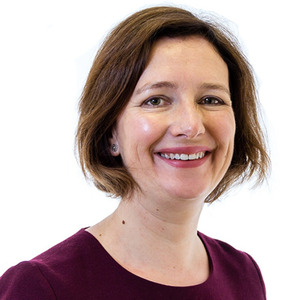
Louisa Wickham
Power List Profile
National Clinical Director for Eye Care, NHS England. Medical Director Moorfields Eye Hospital Foundation Trust, London, UK
What is an interesting or little-known fact about you?
I grew my own vegetables during COVID-19 in tubs in a very small urban London garden and I have continued to do that since. I get great satisfaction from seeing them grow and relish the challenge of eating them before the garden bugs do!
Why did you decide to pursue ophthalmology/your subspecialty?
I love that ophthalmology combines the academic rigor of medicine with the dexterity and skill of microsurgery; this really appealed to me as I enjoyed both my surgical and medical attachments as a junior doctor. The specialty can at times be very focused, narrowing in on one aspect of the eye, but can then pivot quickly to a very broad systemic based approach, which means you always need to consider not just the eye disease but the individual as a whole. It is a great specialty and one that I have never tired of trying to master.
Is there a particular tool, technological advance, or instrument you would not have been able to live without over the past 10 years?
I use 27G vitrectomy for diabetic delamination and would not be without it. It has resulted in a paradigm shift in terms of delamination technique for me particularly when dealing with complex combined rhegmatogenous and tractional detachments. Being able to introduce the cutter between membranes and the retina has transformed the speed and safety of fibrous tissue removal. The overall improved safety profile of transconjunctival trochar systems has really changed our approach to the timing of surgery in diabetic disease and I hope that we will see the benefits of this in years to come.
What would you like to see change in ophthalmology/your subspecialty over the next 10 years – and why?
The rising demand for ophthalmic care has put increasing pressure on health systems to identify and manage eye disease. This was the case before the COVID-19 pandemic but is now a real focus for us in the UK as we try to address significant backlogs. This has given us the impetus to radically transform how we deliver ophthalmology services and we are now working towards digitally enabled pathways to deliver end to end patient care. An example of this is our diagnostic centres for the asynchronous collection of data, particularly for patients with glaucoma and retinal disease. This has allowed us to risk assess and manage large numbers of patients, identifying those with more complex needs that require face to face consultation. I hope that the work we are doing will mean that in 10 years time no one suffers preventable visual loss and can expect to receive the right care, in the right place and the right time.
